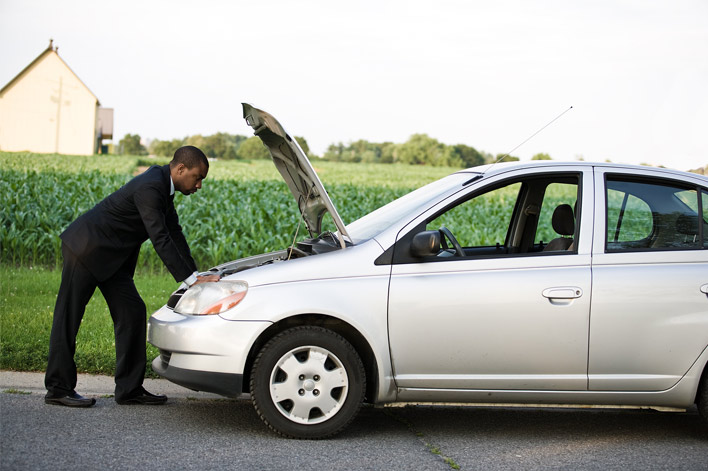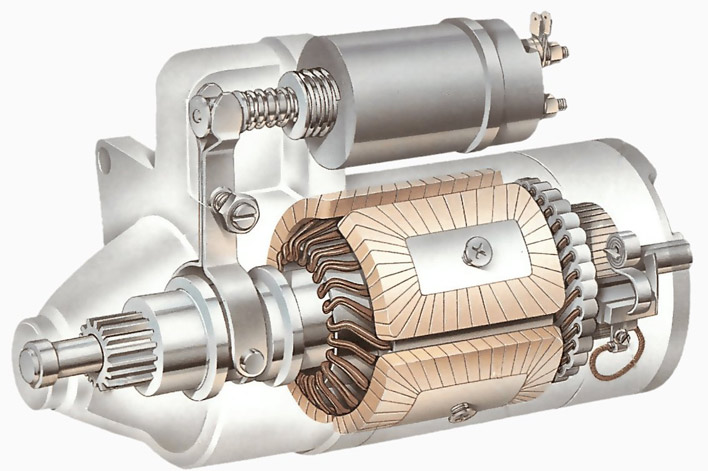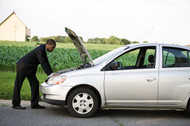How to Tell If Your Starter Is Bad
15th Mar 2017

Your mind is whirling with the list of things you have to do as you settle into the driver’s seat of your car. It’s a good thing that it’s Saturday because you know you have all the time you need without affecting your work schedule. You put the key into the ignition switch and attempt to start the car.
The car doesn’t start and you hear either a click or several clicks, the engine attempting to turnover without success, or a cringe worthy grind. The car won’t start. Has the starter failed?
How can you tell if your start is going out and how do you fix it? First, of course, you need to understand what the starter is and how it turns on the engine.
What Is A Car Starter
A car starter is an essential part of the car because it actually turns the engine on. It is a motor that works all sorts of other parts that need to work properly to ultimately engage the engine to start. These parts include:
-
Return Springs
-
Solenoid
-
Commutator
-
Brushes
-
Field Windings
-
Pinion
-
Actuating Arm
When you turn the key in the ignition switch the car’s battery is engaged and feeds an electric current through a thick wire to the starter motor, which activates a solenoid that gets an electromagnet to attract an iron rod that closes two heavy contacts that completes the circuit from the battery to the starter. The starter motor then causes the pinion to move and engage a large gear ring that turns the engine flywheel and starts the engine. When the ignition switch stops feeding current to the solenoid, the contacts open and the starter motor shuts off.
Because the starter motor uses a lot of electricity, which could deplete the battery, return springs on the rod help turn the starter motor off so that it doesn’t turn more than necessary to start the engine. This procedure is important because if the engine starts and the starter motor stays on, the engine will spin the starter very fast possibly causing damage to it.
How to tell if your starter is going out
Right off the bat, if the car won’t start after turning the key in the ignition switch, your battery could be dead. So it is not uncommon for one to check the condition of the battery. However, if the battery is not the culprit, then it is possible that the starter is.
Bad starter symptoms include:
-
A grinding noise. If the starter drive gear is worn out or does not properly engage, then you will hear a grinding sound. If action is not taken to fix the issue, then the engine flywheel could also be damaged.
-
Freewheeling. If you turn on the ignition switch and hear a whining sound and the engine is not cranking, then it’s possible that the starter gear is not engaging the flywheel. If this is occurring, then your starter may have to be replaced. It is suggested that you get the starter serviced immediately.
-
Smoke. The appearance of smoke could be a sign that there are a number of different problems with the starter. Smoke is usually a sign that there is too much power being drawn from the battery to the starter. That could occur if the starter is shorting, that is has been working too long, or there is a connection problem. Should this occur, then it is advised that you seek the help of a professional mechanic immediately.
-
Oil Soak. Since the starter is located at the bottom of the engine, it is susceptible to soaking due to oil or other fluids leaking from the engine. If this is the case, fix the leak and replace the starter.
-
Broken Solenoid. As mentioned, the solenoid feeds electrical current from the battery to the starter motor when the ignition switch is turned on and also moves the rod into the flywheel to turn on the engine. If the solenoid is broken, the starter won’t work. It is suggested that you wiggle the gearshift. If this doesn’t get the car to start, then the problem most likely is the solenoid.

Others Things To Check
When troubleshooting signs of a bad starter, it is suggested that you check into the basic things first. This would include:
- Battery
- Battery Cables
- Transmission
- Fuel In The Tank
- Security Light
- Antitheft System With Starter Immobilizer
If the car doesn’t start when the automatic transmission is in “park,” try it with the transmission in “neutral.” Sometimes a problem a neutral safety switch prevents the car from starting when the transmission is in “park.”
The battery doesn’t necessarily have to be dead to be the problem. A weak battery or poor connection at the battery terminal could cause a click or repeated clicks when turning on the ignition. In addition, corrosion can develop on the battery terminals, which causes a weak feed to the starter. Check the battery for corrosion periodically and if it’s present, clean it off with a wire brush. Corrosion present within the wire and a bad ground between the battery and the engine can also cause a weak battery connection resulting in the clicking sound. Determine if it is the starter or battery. If the battery is not the problem, then the starter motor is.
A weak battery can also be the culprit if the engine cranks very slow and won’t start. Again, determine if the problem is the starter or battery. If the battery is performing properly, then the starter motor is the problem.
If you attempt to start the engine and it cranks slower and slower and then clicks, then the starter motor is not getting enough power to turn over the engine.
The battery can also be considered if the instrument panel lights don’t go on when you turn on the ignition. Such an occurrence is a sign that there is no power coming from the battery. It could be due to a dead battery, but it could also be a bad ignition switch or bad wire between the switch and the battery. Turn the headlights on. If they work, the battery is okay.
If nothing happens when you turn the ignition switch on, then the starter motor won’t go on to start the engine. Again, a dead battery could be the cause. However, if the battery is okay, then the starter isn’t working for a number of other issues. The signs of a bad starter include:
-
A bad ignition switch. Try wiggling the key while it is in the switch. If this gets the car to start, then the switch should be checked.
-
Starter solenoid control wire. There could be a bad connection.
-
Starter motor or solenoid
What should I do?
Suffering starter or battery problems that result in your inability to start your car can be distressing. Short of calling for a tow truck, there are six things you can do to start your car so you can drive it to a repair shop.
-
Jumpstart the car if you determine that the battery is not the problem. You can also use a battery tester.
-
Try starting with the transmission in neutral.
-
Hit the starter with a hammer or hard object.
-
Put the manual transmission into neutral, turn the ignition key on and as you stay in the car have someone push it or roll it down a hill so it gains momentum. Once you are moving, pop the clutch and put the transmission into first gear or reverse depending on the direction you are moving.
-
Make sure that the battery cables are securely tightened to the battery terminals. A loose connection could be the reason why the car won’t start.
-
If the car won’t start, but it is cranking, check to see if there is fuel.

